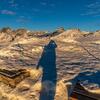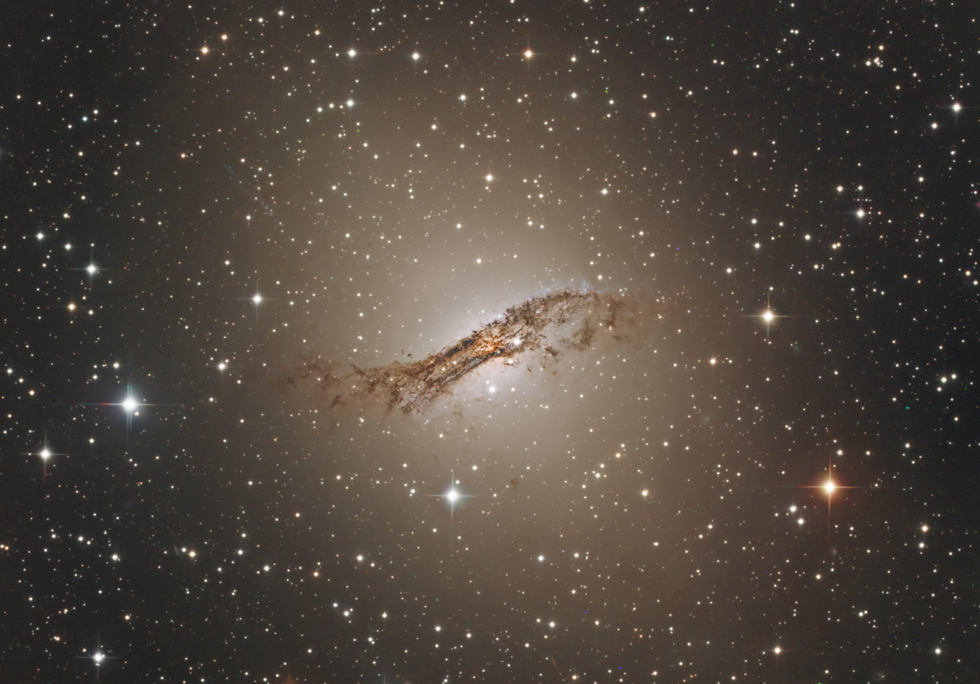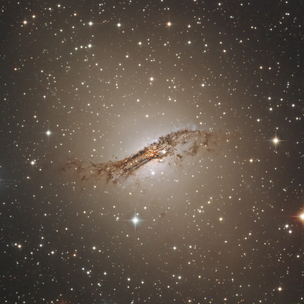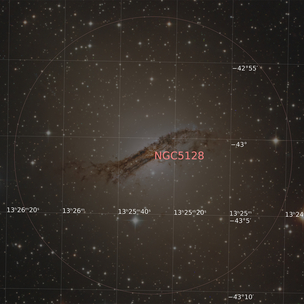NGC 5128 - Centaurus A
0
5
NGC 5128 - Centaurus A
Centaurus A (also known as NGC 5128 or Caldwell 77) is a galaxy in the constellation of Centaurus. It was discovered in 1826 by Scottish astronomer James Dunlop from his home in Parramatta, in New South Wales, Australia. There is considerable debate in the literature regarding the galaxy's fundamental properties such as its Hubble type (lenticular galaxy or a giant elliptical galaxy) and distance (10–16 million light-years). NGC 5128 is one of the closest radio galaxies to Earth, so its active galactic nucleus has been extensively studied by professional astronomers. The galaxy is also the fifth-brightest in the sky, making it an ideal amateur astronomy target. It is only visible from the southern hemisphere and low northern latitudes.
The center of the galaxy contains a supermassive black hole with a mass of 55 million solar masses, which ejects a relativistic jet that is responsible for emissions in the X-ray and radio wavelengths. By taking radio observations of the jet separated by a decade, astronomers have determined that the inner parts of the jet are moving at about half of the speed of light. X-rays are produced farther out as the jet collides with surrounding gases, resulting in the creation of highly energetic particles. The X-ray jets of Centaurus A are thousands of light-years long, while the radio jets are over a million light-years long.
(Source: Wikipedia)
Fun fact: do you see the optical illusion on the left that looks like two stars? Well, those are actually two stars, TYC7795-1719-1 and TYC7795-1719-2.
The center of the galaxy contains a supermassive black hole with a mass of 55 million solar masses, which ejects a relativistic jet that is responsible for emissions in the X-ray and radio wavelengths. By taking radio observations of the jet separated by a decade, astronomers have determined that the inner parts of the jet are moving at about half of the speed of light. X-rays are produced farther out as the jet collides with surrounding gases, resulting in the creation of highly energetic particles. The X-ray jets of Centaurus A are thousands of light-years long, while the radio jets are over a million light-years long.
(Source: Wikipedia)
Fun fact: do you see the optical illusion on the left that looks like two stars? Well, those are actually two stars, TYC7795-1719-1 and TYC7795-1719-2.
SPECIFICATIONS
Telescope
Planewave CDK24
Camera
FLI PL 9000
Location
El Sauce Observatory, Chile
Date of observation
April 2020 - July 2021
Filters
Astrodon LRGB
Processing
Processed in PixInsight and Photoshop





